
Some Of $3.4 Billion Weapons Sent To Ukraine Will End Up In Black Market – Others May Come Back To Haunt U.S. & Europe
President Biden has decided to send yet another round of military weapon package worth a staggering US$800 million to Ukraine. Since Russia’s invasion two months ago, the United States has splashed US$3.4 billion in weapons. In fact, the latest military aid is the eighth installment, and we haven’t talked about similar assistance from the European Union.
In the latest weapons aid, the U.S. will give away 121 tactical unmanned aerial systems called “Phoenix Ghost” drones. Before the Ukraine War, very little is known about this drone. The Phoenix Ghost is a UAV that uses the “kamikaze” technique to destroy its target. It is similar to “Switchblade” drones, but can loiter for 6 hours compared to Switchblade’s 1 hour, searching for targets.
Developed by AEVEX Aerospace (which itself is the result of a merger of three defense-related companies – Merlin Global Services, CSG Solutions, and Special Operations Solutions) in California, Phoenix Ghost can operate at night using infrared sensors. The latest drone is not only a mystery, but has been especially tailor-made for Ukraine to fight the Russians.
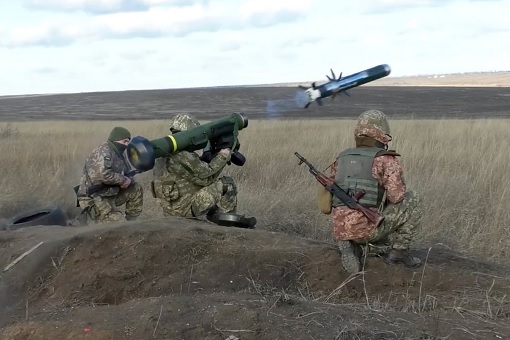
The U.S. has already sent 300 Switchblade drones, comprising model 300 and 600, to Ukraine. The 300 variant is designed to strike small targets and weighs about 5 pounds (2.5 kg) and has a range of 10 miles (16 kilometres). The 600 version is designed to destroy tanks and other armored vehicles, weighing about 120 pounds (55-kg) and has a range of more than 40 miles (65-km).
The latest package also included 72 howitzer artillery systems, 144,000 artillery rounds and other equipment. The new round of howitzers is in addition to 90 howitzers sent in the last two weapons packages. Pentagon has also sent 184,000 artillery rounds previously. So far, the U.S. has delivered nearly 6,000 Javelins portable anti-armor weapons to the Ukrainian government.
In addition, nearly 2,000 Stinger anti-aircraft missile systems, 6,000 portable AT-4 anti-armour systems as well as other laser-guided rocket systems had been committed. A mind-boggling 40 million rounds of small arms ammunition and more than 5,000 rifles, 1,000 pistols, 400 machine guns and 400 shotguns has also been sent to Ukraine, not to mention more than 1 million grenades and mortars.

Washington has also delivered more than 30,000 sets of body armour and helmets. Unknown numbers of night vision devices, thermal imagery systems, and biological, radiological and nuclear protective equipment have also been sent. The U.S. has agreed to send at least 11 Mi-17 Russian military helicopters that were once planned for Afghanistan’s military fleet.
The US$3.4 billion in military aid since February 24 is just a part of the US$6.5 billion in security assistance that Congress approved last month. In total, the package for Ukraine is worth US$13.6 billion, included about US$6.8 billion in direct economic assistance. Ukrainian President Zelensky said his nation will also need up to US$7 billion each month to make up for economic losses.
Indeed, war is a big business, and it was good news for American defence giants like Lockheed Martin and Raytheon when the Ukraine War first started. But does the Government of the United States really know what happens to those weapons once delivered? Apparently not, largely due to the U.S. refusal to send troops to help Ukraine fight Russia.
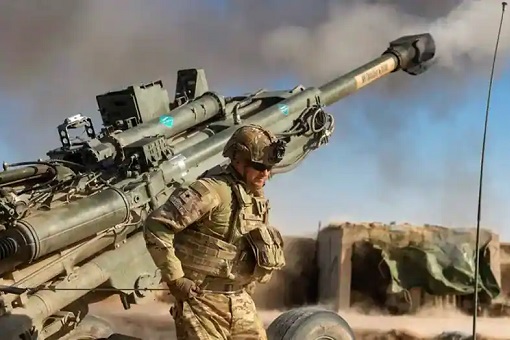
Without U.S. boots on the ground, Joe Biden can only hope the weaponry will not disappear into a “big black hole”. It means the U.S. and NATO depend solely on information provided by the Ukrainian government. For better or worse, the Western powers have no other choice but to trust Zelensky, who has been whining and begging for weapons almost every single day.
However, history has proven that some of the shipments will always end up in unexpected places or fall into undesired hands. When neither Ukraine nor NATO could officially agree with the number of troop casualties, how do you expect the U.S. keep track of their weapon stocks? Pentagon said – “I couldn’t tell you where they are in Ukraine and whether the Ukrainians are using them at this point.”
Trucks loaded with American or European weapons are basically picked up by Ukrainian armed forces – primarily in Poland – and then driven into Ukraine. From there onwards, it’s up to the Ukrainian government to decide where they go and how they’re allocated inside their country. The use of satellite to collaborate Ukrainians’ claims of the whereabouts of the weapons can only do so much.
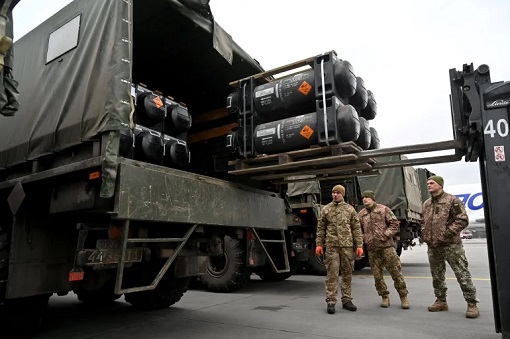
The U.S. also hopes they can trust Ukraine based on the eight years they trained and equipped the Ukrainian military. But that’s precisely what America did with Afghanistan too. For 20 years, the U.S. had spent trillions of dollars in training and equipping hundreds of thousands of Afghan National Security and Defense Forces. At the end, weapons still ended up in the black market.
Even before the Afghanistan occupation, the weapons sent to arm the Mujahideen to fight against the Soviet army such as anti-aircraft Stinger missiles had gone missing. Worse, Taliban used the sophisticated U.S. weapon to shoot down American CH-47 Chinook helicopter over Helmand in 2007 and killed seven soldiers, including a British military photographer.
The episode was so humiliating that it was covered up. A story was cooked up that the helicopter, codenamed Flipper, has been brought down by a rocket-propelled grenade (RPG). In fact, two Apache attack helicopters hovering over the crash site of the Chinook were almost brought down by a Stinger fired by the Talibans. The best part, Taliban had bought the Stingers for just US$1,000 each.

The CIA-supplied Stingers meant to blow Soviet helicopters were crucial in forcing the Soviets to quit Afghanistan War in 1989. After the Soviet withdrawal, the U.S. government scrambled to collect the remaining missiles, particularly unused Stingers from the stockpile of up to 2,000 distributed in the 1980s. However, some of them had already found its way to Iran, who purchased it from Algeria.
Hilariously, some Afghan tribesmen walked into U.S. bases and offered to sell their private stocks of missiles, which could fetch US$5,000 for older SA-7 missiles and US$15,000 for a Stinger. When the U.S. abruptly left Afghanistan last year, the massive cache of weapons and other military hardware left behind became Taliban’s arsenal after the Afghan government surrendered and ran away without firing a single bullet.
So, what is there to stop Ukrainians from doing the same? It might not be easy to sell howitzer artillery systems or S-300 missile defence system. But portable gadgets like Phoenix Ghost and Switchblade drones, as well as lightweight missile launchers like US$200,000 Javelin and US$40,000 Stinger could easily change hands.
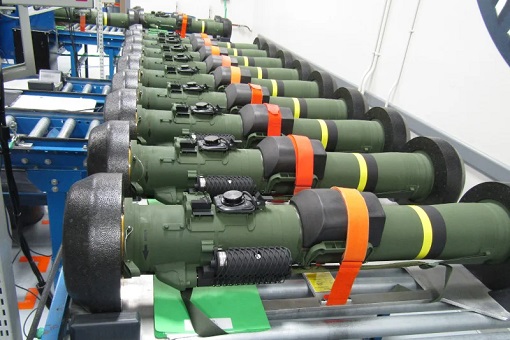
Washington took comfort that Russia’s failure to occupy Ukraine means that those arms have either been used to successfully push back the Kremlin, or still remain in Ukrainian hands. The Americans also argue that the incompetent Russians have failed to locate and intercept, let alone destroy the western weapons shipments entering Ukraine.
But there could be another possibility – some of the shipments may have been directed elsewhere once they entered the Ukrainian territory. Given the lawlessness in the warzone, even the Ukrainian government has lost track of the weapons distributed. Zelensky famously asked Ukrainian residents to arm themselves, leading to a long queue for the free weapons and ammunitions.
According to Global Organised Crime Index, even before the current war, Ukraine is not only a source, transit and destination point for human trafficking, but also is one of the largest arms trafficking markets in Europe. Ukraine’s ports are also an important transit destination for heroin. Within Ukraine, the cities of Odessa, Dnipro, Kharkiv, and Kyiv are significant logistical centres for criminal networks.
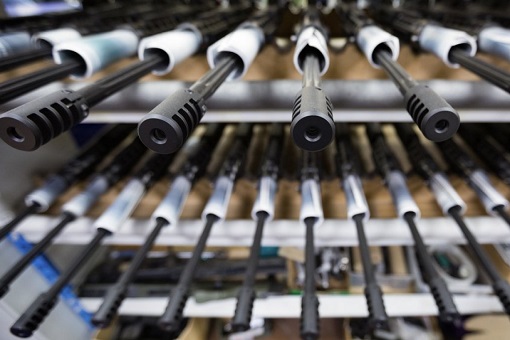
Ukraine has had a strong presence of organized mafia-style groups since the dissolution of the Soviet Union. It is estimated that there are around three dozen criminal bosses, known as “vory-v-zakone” (thieves-in-law), included influential mafia groups Lux, Bashmaky and Samvel Martirosyan gang. There are also organized criminals that have Chechen, Russian, Georgian, South Ossetian or Azerbaijani backgrounds.
Ukrainian mafia-style groups are usually active in arms trafficking, extortion, robbery, murder for hire, and kidnapping. Worse, they wield extensive political influence and reportedly have access to multiple levels of the state. To make matters worse, corruption and bribery in Ukraine’s judicial system are widespread. Ukraine is also vulnerable to money laundering and other illicit financial flows.
It’s not rocket science that the weapons donated by the U.S., U.K. and NATO will somehow find its way back to Europe and Middle East – even the U.S. – in the hands of criminals and terrorists, thanks to the illegal sale and black market. But President Biden and European leaders do not really care about terrorism because it would be average Joes and Janes who will be killed, certainly not elite politicians.
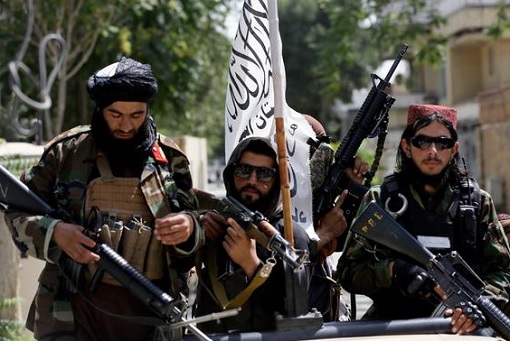
Is Ukraine any different from Afghanistan? Actually, the American supply of weapons and training to ultra-nationalist right wing neo-Nazi Ukrainian militias, which form the Azov Battalion since 2014 is similar to how the U.S. supplied weapons to the Mujahideen in Afghanistan. Let’s not talk about Afghanistan. Let’s talk about Ukraine.
After Vladimir Putin annexed Crimea in 2014, the U.S. similarly did not send any troop to help Ukraine. But Trump administration did approve the sale of lethal defensive weapons to Ukraine ever since. Later, at least €1.2 billion worth of weapons, which the Western powers gave away like candy to kids, was secretly routed to Middle Eastern countries, fuelling the unrest in Syria and Yemen.
In 2016, Ukrainian authorities convicted Gregoire Moutaux of attempting to smuggle weapons, including rocket launchers for a terrorist attack in France. In 2019, Ukrainian soldiers attempted to sell a collection of weapons, including 15 RPG-22 rockets for just US$2,900. Any weapons worth upwards of US$25,000 that can easily be stashed in the back of a car are favourite items for sale.
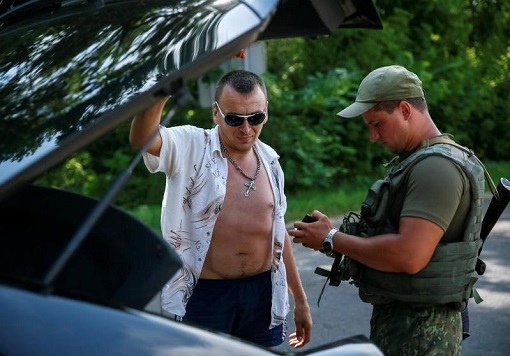
Ukraine is Very, very different from Afghanistan.
ReplyDeleteAfghanistan was a civil war , where many members of the Afghan Army no longer had any motivation to fight the Taliban.
The Ukrainians are pumped up, Super motivated to fight the Russian invader on their Soil. Many Russian- speaking Ukranians are heavily engaged in fighting the Russian invaders.
The American and other NATO military aid will end up as many, many DEAD Russian invaders.
Wakakakaka…
DeleteTales of 1001 farts from a known-nothing mfer!
Ooop… haven't u read that an Ukraine transport plane carrying Western weapons was shot down in Odessa - apparently via a stinger missile operated by the Kherson separatist!
The military reality Poo Tin faces now is that Russia cannot win this war as long as the Ukrainian people are motivated to resist the Russian invaders.
ReplyDeleteMilitary weapons and supplies will not be a problem....it's the Wankee military-industrial complex fully signed up behind Ukraine.
So, u have finally realised that Russia is fighting yr Yankee idol who us using the Ukrainians as cannon folders via a comedian president!
Delete